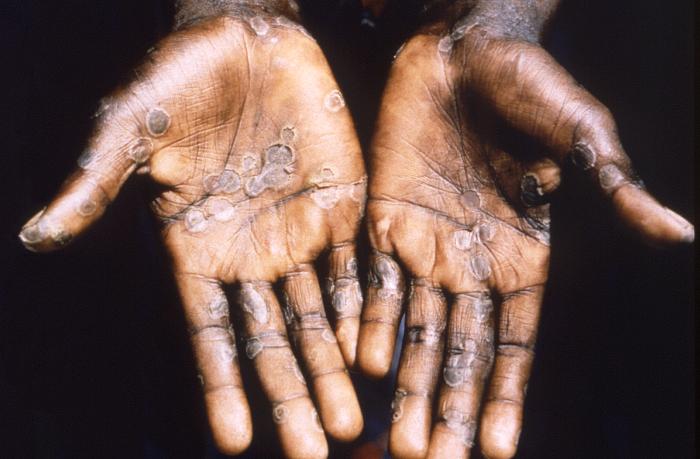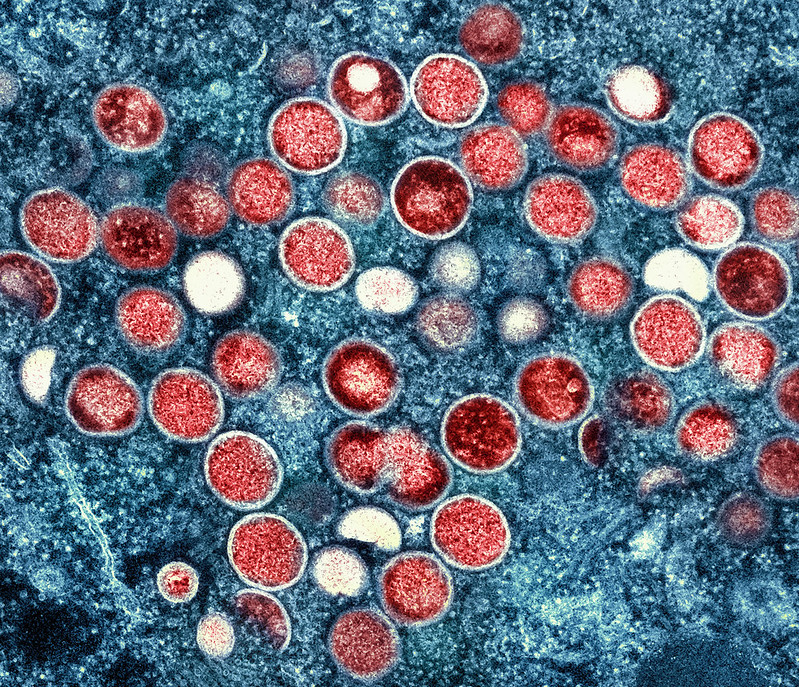The World Health Organization (WHO) has shown concern, especially because of the speed, scale and imminent arrival of the outbreak in high-risk groups such as pregnant women, children, seniors and immunocompromised people. However, although they have been monitoring the evolution, they have not decided to declare an international health emergency for the moment.
The WHO emergency committee confirmed that an intensive response is required to control the spread of monkeypox. It is expected that over time, scientists will have more information to answer questions. The committee is expected to revise its decision if significant changes occur.
What is monkeypox?
Monkeypox is a zoonotic viral disease. It can be transmitted from animals to humans, and then between people. The monkeypox virus was discovered in 1958 in apes in a laboratory, but the animals most likely to infect humans are rodents.
The disease — caused by an orthopoxvirus, which is frequently found in tropical rainforests in Central and West Africa — is similar to smallpox, although usually with milder and less contagious symptoms. What is atypical about this outbreak is that cases have been occurring outside Africa in people who have not traveled.
There are different types, such as the smallpox virus, although they are genetically similar and share many characteristics. For that reason, it is thought that the vaccine used until a few decades ago against smallpox may work against monkeypox, although not one hundred percent. Vaccinated populations should also take precautions.

What are the symptoms of monkeypox?
Symptoms usually include a headache, fever, back pain, swollen lymph nodes, muscle pain and skin rash, the latter beginning between the first and third day of the onset of fever, but some people develop blisters or pimples before they have other symptoms.
In the early period, the lesions on the skin are small flat marks, later there are bumps and then they fill with yellowish or transparent liquid. In other phases of the disease these lesions turn into crusts; as they heal, these bumps dry up and then fall off.
Symptoms may last from two to four weeks, however some people may become very ill. Lesions also vary from person to person, with most people developing rashes on the palms of the hands, face and soles of the feet, but they can also appear on the genitals, mouth and eyes.
How is monkeypox spread?
Transmission occurs from contact between infected animals or people. Individuals with active disease are contagious for two to four weeks or as long as they have symptoms. People can be infected if they have physical contact with someone with symptoms.
Body fluids, blood, saliva or blister fluids from sick people are infectious. The clothing, items, objects, kitchen utensils and bedding of sick people are also considered to be contaminated with the virus. If another person is in contact with these, they can contract the virus. It is not clear whether asymptomatic persons can transmit the disease.
Is monkeypox sexually transmitted?
Monkeypox is not a sexually transmitted infection, but because it is easily passed on through skin-to-skin contact, it can be spread during sexual encounters.
Is monkeypox lethal?
Generally, symptoms disappear within a few weeks on their own. In other words, for most people the virus is not serious. However, some patients have had medical complications that have resulted in death. Complications may include pneumonia, eye infections, skin infections and confusion.
Children, newborns, those over 60 years of age, and people with other conditions are more likely to develop more severe symptoms. At-risk groups include people with hypertension, diabetes, immune problems and obesity. Likewise, healthcare workers are among the groups most at risk of infection due to high exposure.
Is isolation recommended for monkeypox?
Infected persons should avoid contact with other people. The indicated quarantine time is until the pustules dry and then the scabs fall off; at this point, they can no longer transmit the disease. Pets should also remain in quarantine to prevent wild from becoming infected, starting a disease chain.
Finally, it is advisable to wash hands frequently or disinfect them with an alcohol-based product, just as we have been doing to avoid Covid infections.
Images: NIAID and CDC / Brian W.J. Mahy

